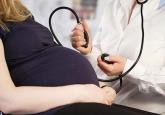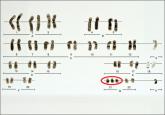Expert Commentary

When is cell-free DNA best used as a primary screen?
At age 38 years, cell-free DNA screening as the first-line test becomes the optimal strategy; at age 40 years, cell-free DNA as a primary screen...
Mary E. Norton, MD
Dr. Norton is Professor of Obstetrics, Gynecology, and Reproductive Sciences at the University of California, San Francisco.
The author reports that she receives grant or research support from Natera.

ACOG recommends that diagnostic testing should be available to all pregnant women, regardless of age. 15 In prenatal series, trisomies 13, 18, and 21 make up approximately two-thirds of all clinically significant aneuploidies. 16,17 Given that cfDNA detects only these aneuploidies, the other third will not be identified prenatally in patients who choose cfDNA. Traditional aneuploidy screening has been demonstrated to detect a broader range of these less common but clinically important chromosomal abnormalities. 18
In one study of women found to be at increased risk based on traditional multiple marker screening, if cfDNA were chosen instead of diagnostic testing, 17% of the aneuploidies present in this group would not have been detected. 18 Of all high-risk women in this study, 2%, or 1 in 50, had a chromosomal abnormality detectable by amniocentesis but not with cfDNA.
Successful tests require adequate placental DNA
Accurate interpretation of cfDNA screening also requires that an adequate quantity of placental DNA be present; this is often referred to as the “fetal fraction.” In some cases, the placental DNA volume is too low for accurate analysis, particularly in obese patients and women with specific chromosomal abnormalities.
Some laboratories measure this and do not report a result if the fetal fraction is below a specific cut-off, typically about 4%. Other laboratories do not measure or exclude cases with too little fetal DNA, raising concern that this could result in missing cases of aneuploidy. It has been noted that a placental DNA fraction of less than 8% is associated with less accurate test results, even if results are returned. 8
Low fetal fraction also has been associated with maternal obesity, and in one study cfDNA failed to provide a result in 20% of women weighing more than 250 lb and 50% of women weighing more than 350 lb. 19 Therefore, cfDNA is not the best option for obese women ( TABLE 4 ).
Optimal candidates for cfDNA screening
Less optimal candidates
While the free fraction is relatively constant from 10 to 22 weeks’ gestation, it is lower earlier than 10 weeks’ gestation and less likely to provide a result. For this reason, the test should not be attempted before 10 weeks’ gestation.
Recent evidence indicates that low fetal DNA fraction is associated with some chromosome abnormalities. Given this association, women with failed cfDNA results should be counseled and offered appropriate follow-up. As the association appears to be greater for trisomies 13 and 18, and triploidy, a careful ultrasound is likely to detect abnormalities in many such cases. However, it also is appropriate to offer the option of diagnostic testing, given the very high risk.

At age 38 years, cell-free DNA screening as the first-line test becomes the optimal strategy; at age 40 years, cell-free DNA as a primary screen...
While keeping trisomy 21 detection rates similar

ACOG and SMFM recently focused on filling in the gaps on necessary surveillance, treatment, and testing for management of twin gestations,...

Does noninvasive prenatal testing change our concepts of screening and diagnosis?
Not without appropriate patient counseling. This prospective, multicenter study of women at high risk for fetal aneuploidy found 100%, 100%, and...
